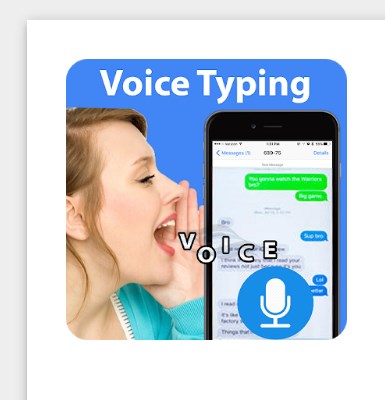
Speech to Text Mastery for Tech-Savvy Small-Business Owners
Introduction
Picture this: You’re driving between client meetings when a million-dollar idea pops into your head.
With speech to text, you can capture that insight without touching a keyboard.
This article reveals practical ways entrepreneurs can apply voice dictation, real-time transcription, and AI to streamline operations, cut expenses, and outpace competitors.
Stick around to discover must-have features, an easy implementation roadmap, and ROI calculators that make decision-making simple.
Speech to Text Basics: How the Tech Actually Functions
speech to text relies on deep neural networks click here to change audio waves into readable text.
Key steps include:
- Audio pre-processing: noise reduction and volume normalization
- Feature extraction: converting audio into Mel-frequency cepstral coefficients
- Neural inference: predicting characters or copyright
- Post-processing: applying punctuation and capitalization
The output appears on your screen in near real time, ready for sharing or archiving.
Why Small-Business Owners Need Speech to Text Today
Time is money, and speech to text saves both.
Here’s why owners aged 30-55 are adopting it:
- Productivity Boost: Speaking is roughly 3× faster than typing, slashing document creation time.
- Accessibility & Inclusivity: Team members with disabilities can contribute on equal footing with voice dictation.
- Data Accuracy: Instant transcripts cut down on misinterpretation and lost details in customer calls.
- Cost Savings: By automating note-taking, companies frequently cut admin hours by double digits each month.
Choosing the Right Speech to Text Tool: Must-Have Features
Platforms differ drastically.
When comparing voice to text products, prioritize:
1. Accuracy & Language Support
- Look for ≥95 % accuracy on benchmarks.
- Check regional accent and language packs you’ll actually use.
2. Real-Time Transcription Speed
- Lag should be under 300 ms for smooth meetings.
3. Enterprise-Grade Security
- Insist on AES-256 encryption and SOC 2 compliance.
- HIPAA or GDPR requirements? Verify certifications.
4. Integration & API Access
- Connect easily with Zoom, Slack, or your CRM.
A feature checklist like the one above ensures you don’t pay for bells and whistles you’ll never need.
Real-World Use Cases: From Meeting Notes to Content Creation
Still wondering if voice to text fits your niche? Take a look at these micro case studies.
- Law Firm (5 employees): Shifted to voice dictation for drafts, gaining 15 extra billable hours monthly.
- eCommerce Brand: Real-time transcription of TikTok Lives boosted subtitle engagement by 34 %.
- Consultancy: Meeting transcripts fed into an AI summarizer, generating shareable memos in 60 s.
Step-By-Step Guide to Deploying Speech to Text
Deploying real-time transcription? Try this agile sprint approach.
- Week 1: Pilot inside one department.
- Week 2: Collect feedback; adjust custom vocabulary.
- Week 3: Expand to cross-functional teams.
- Week 4: Document SOPs, then negotiate enterprise pricing.
Overcoming Common Challenges and Misconceptions
Misconceptions still abound. Time to bust some myths.
- “Speech to text is only for big enterprises.” Wrong—small firms usually recoup costs sooner due to agility.
- “My accent won’t be recognized.” Modern engines train on global datasets, so accuracy stays high.
- “Setup takes months.” With SaaS tools, you can be live within days, sometimes hours.
Future Trends: AI, Multilingual Support & Beyond
The future is buzzing.
Expect these breakthroughs:
- Contextual AI: Engines will flag emotion and intent on the fly.
- Edge Processing: On-device models cut latency to near zero and safeguard privacy.
- Expanded Languages: Vendors aim to cover over 1,000 dialects soon.
- Seamless Translation: Instant speech-to-speech translation will break market barriers.
Early adoption of beta releases keeps you ahead of rivals.

Conclusion
Whether for brainstorm capture or compliance automation, speech to text has moved from luxury to necessity.
You now have the blueprint: understand the tech, choose the right features, launch in sprints, and monitor ROI.
Ready to transform how you and your team communicate?
Take action today: grab a free trial, integrate it into tomorrow’s meeting, and witness the difference.
FAQ
- What is speech to text and how accurate is it?
Speech to text tools use AI to turn voice into text, achieving about 95 % accuracy for many languages.
- Is voice to text secure for sensitive data?
Yes—leading vendors offer end-to-end encryption, HIPAA, and GDPR compliance to keep your transcripts safe.
- Can I use real-time transcription during video conferences?
Absolutely. Most major speech to text APIs integrate with Zoom, Teams, and Google Meet, generating live captions instantly.
- Does speech to text work with different accents?
Current speech to text models are trained on varied accent libraries and typically maintain strong accuracy across dialects.
- How much does a voice dictation platform cost?
Pricing ranges from free tiers to pay-as-you-go (≈\$0.006/min) up to enterprise plans; most SMBs spend under \$50/month.